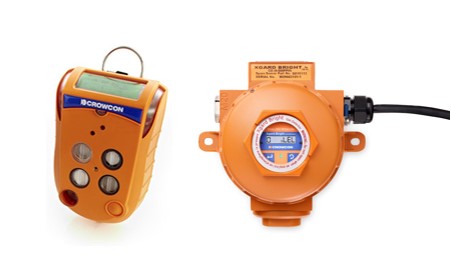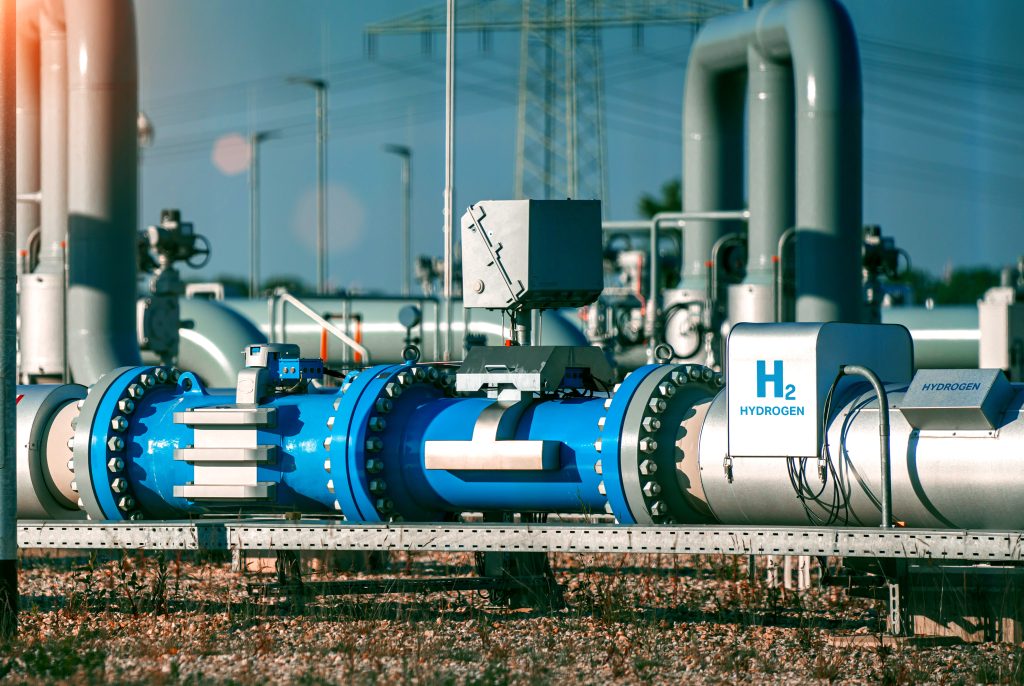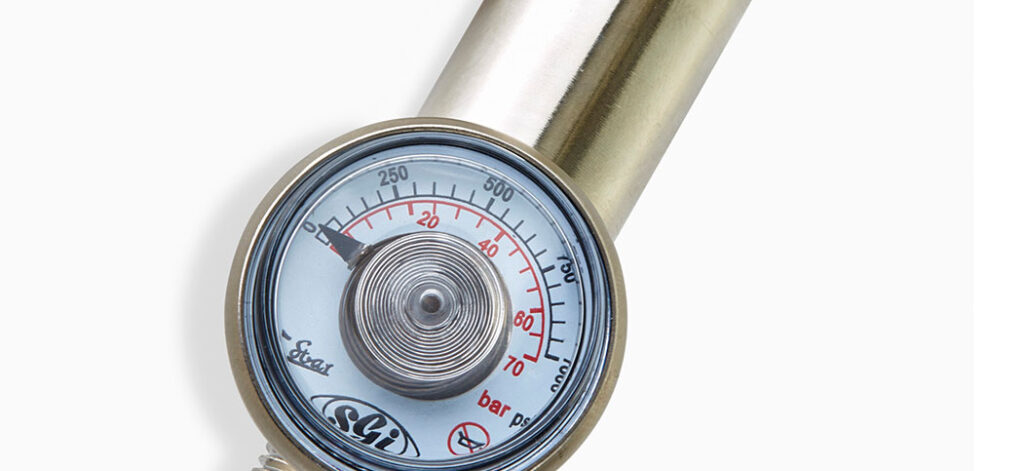Chez Crowcon, nous combinons notre expertise avec les technologies émergentes pour développer des processus de compréhension et de protection pour nos clients, en améliorant l'efficacité opérationnelle et en créant des lieux de travail plus sains et plus sûrs. Au fil des ans, nos experts ont été confrontés à de nombreux cas choquants d'utilisation dangereuse de détecteurs de gaz.
Dans cet article, nous allons explorer quelques-uns des cas extrêmes que nous avons vus où l'équipement de détection de gaz a été utilisé par erreur, dans l'espoir de réduire le nombre d'accidents et de décès dans les environnements dangereux.
Orientation du détecteur
Pour garantir une réponse correcte et l'efficacité de votre détecteur de gaz, tous les détecteurs doivent être installés conformément aux instructions du fabricant. Tous les appareils doivent être installés en position verticale, ce qui permet à l'appareil de fonctionner à pleine capacité. Le seul appareil Crowcon de notre gamme qui doit être installé à l'horizontale est le IRmax.

Panneau de contrôle/détecteur Proximité
Nous avons vu des panneaux de contrôle placés près ou à côté de détecteurs de gaz. Vous n'installeriez pas un interrupteur au fond d'une pièce, alors pourquoi vous mettriez vous et les autres en danger en plaçant votre panneau de contrôle à côté de votre détecteur de gaz ?
Ce site Gasmaster Le panneau de contrôle et le détecteur Xgard sont très proches l'un de l'autre. Dans le cas d'une alarme gaz, quelqu'un devrait pénétrer dans la zone dangereuse pour accéder au panneau de contrôle.
Dans le cas d'une alarme de gaz, un travailleur devrait pénétrer dans la zone dangereuse pour accéder au panneau de contrôle, ce qui pourrait entraîner la mort. La solution la plus efficace consiste à installer le panneau de contrôle dans une zone sûre, à l'écart de l'environnement gazier, et à déployer des alarmes sonores et visuelles. Nous disposons d'une gamme de détecteurs dotés d'affichages locaux, tels que l'alarme sonore et visuelle. Xgard Bright.

Capteurs contaminés
Au fil du temps, les capteurs de gaz peuvent être contaminés par des saletés ou des débris provenant de leur environnement, ce qui peut empêcher le gaz d'atteindre le capteur. Cela peut signifier que les capteurs cessent de réagir à des niveaux élevés de gaz dangereux. Nous recommandons d'effectuer des tests de déclenchement (tests fonctionnels) fréquemment et régulièrement pour s'assurer que le détecteur n'a pas développé de défauts et qu'il fonctionne à pleine capacité.
La fréquence des tests de déclenchement dépend des normes régionales, des recommandations du fabricant, de l'évaluation des risques spécifiques au site et de la fréquence d'utilisation de l'appareil. Des plaques filtrantes externes remplaçables sont disponibles pour éviter la contamination et l'accumulation des capteurs.

Boîtier du détecteur de gaz
Le choix du meilleur matériau pour le boîtier de votre détecteur de gaz peut faire une grande différence en termes de durée de vie et de performances. Par exemple, pour les environnements les plus extrêmes et les plus hostiles, les boîtiers en acier inoxydable sont plus appropriés pour éviter la corrosion. Notre détecteur de gaz Xgard est proposé avec deux options de certification : sécurité intrinsèque ou antidéflagrant, et trois options de matériau de boîtier : alliage de haute qualité, acier inoxydable ou polymère CRN résistant aux produits chimiques. Si vous ne savez pas quel boîtier convient le mieux à votre environnement, nos experts se feront un plaisir de vous aider.

Entretien des capteurs endommagés
L'utilisation de détecteurs endommagés présente un risque important pour les utilisateurs. Plusieurs détecteurs de notre gamme, tels que Xgard Bright et Flamgard Plus , peuvent être étalonnés à l'aide d'un aimant qui permet d'accéder au menu de l'appareil. Ces clés magnétiques ont été conçues pour permettre un étalonnage non intrusif dans les zones dangereuses ATEX. Nos experts ont vu des cas où des utilisateurs ont ouvert l'appareil pour tenter d'accéder directement aux touches. Cela annule la certification et peut présenter un risque car l'ouverture de l'appareil de cette manière peut être une source d'inflammation.

Les détecteurs fixes doivent être installés de manière permanente
Les détecteurs fixes sont conçus pour être installés de manière permanente dans un endroit fixe, conformément aux instructions du fabricant. Les détecteurs fixes ne doivent en aucun cas être attachés à une corde ou à un câble volant pour "en faire un détecteur portable". Dans les environnements à atmosphère explosive (ATEX), il est essentiel de suivre les informations relatives à l'installation et à la sécurité figurant dans le manuel de l'utilisateur fourni par le fabricant afin de conserver la certification.

Les détecteurs portables ne doivent PAS être installés de manière permanente.
Nous ne nous contentons pas de nous répéter, c'est quelque chose que nous avons vu à plusieurs reprises. Les utilisateurs ne doivent pas se servir d'un détecteur portable dans son chargeur comme d'un moniteur permanent. Au lieu de cela, si cela est nécessaire et approprié, un détecteur de gaz fixe doit être installé. Les détecteurs portables sont conçus pour être portés par l'utilisateur, de sorte que l'appareil surveille la "zone de respiration immédiate". En utilisant un appareil portable comme dispositif fixe, il est impossible pour une personne extérieure à la zone dangereuse de savoir s'il y a un risque de gaz.

Installation conforme aux certifications
Il est essentiel de suivre le manuel d'instructions du fabricant lors de l'installation d'un détecteur de gaz, afin d'être en conformité avec la certification de sécurité. Par exemple, lors de l'installation d'un Crowcon Xgard type 5, celui-ci doit toujours être installé avec des presse-étoupes Exd afin de s'assurer que les flammes internes ou les explosions ne sont pas transmises à l'atmosphère environnante. Les exigences de certification sont mises en place pour éviter que les détecteurs ne deviennent une source d'inflammation.

Nous sommes là pour veiller à ce que les entreprises utilisent les équipements de détection de gaz de manière sûre et efficace. Si vous ne savez pas comment entretenir votre équipement, n'hésitez pas à nous contacter.
APERÇU DE L'INDUSTRIE
Abonnez-vous pour recevoir les dernières informations
dans votre boîte de réception.
En savoir plus sur la politique de Crowcon en matière de la vie privée et de de Crowcon ici. Si vous changez d'avis, vous pouvez vous désinscrire à tout moment.






